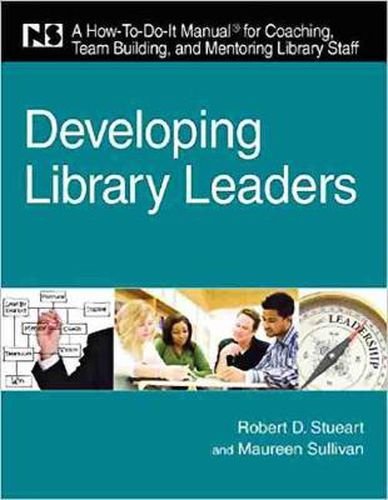Readings Newsletter
Become a Readings Member to make your shopping experience even easier.
Sign in or sign up for free!
You’re not far away from qualifying for FREE standard shipping within Australia
You’ve qualified for FREE standard shipping within Australia
The cart is loading…






This title is printed to order. This book may have been self-published. If so, we cannot guarantee the quality of the content. In the main most books will have gone through the editing process however some may not. We therefore suggest that you be aware of this before ordering this book. If in doubt check either the author or publisher’s details as we are unable to accept any returns unless they are faulty. Please contact us if you have any questions.
How can you successfully lead your library through the changes taking place in today’s transitional information environment? What skills must you develop or hone in order to build a confident, comfortable, and capable staff in your institution? In their highly practical new
How-To-Do-It Manual , authors Robert D. Stuart, the former Dean Emeritus of Simmons College’s Graduate School of Library and Information Science and Maureen Sullivan, a leadership expert with over thirty years experience delivering consulting and training services to libraries and other information services, will help you identify the essential concepts and goals behind great leadership, and effectively implement each one into your library’s organizational structure.
Developing Library Leaders
covers key strategies and processes for coaching, team building, and mentoring library staff. Following a foreword from James G. Neal, the authors clearly define the major roles and responsibilities of a library leader and offer valuable techniques for persuading and influencing others, building and leading teams and groups, and managing projects. There is step-by-step guidance for developing crucial coaching and mentoring skills, as well as tips for succession planning and facilitating long-term development. Throughout the book, Stueart and Sullivan provide ample models, outlines, examples, and charts for further guidance and to reinforce the practical use of key strategies. The generations-old adage that ‘leaders are born not bred’ is a myth; it is now commonly accepted that leadership is a skill that can be developed. Stueart and Sullivan show current and future library directors and managers how to develop their institutions’ most valuable asset - their staff - and better prepare them to lead.
$9.00 standard shipping within Australia
FREE standard shipping within Australia for orders over $100.00
Express & International shipping calculated at checkout
This title is printed to order. This book may have been self-published. If so, we cannot guarantee the quality of the content. In the main most books will have gone through the editing process however some may not. We therefore suggest that you be aware of this before ordering this book. If in doubt check either the author or publisher’s details as we are unable to accept any returns unless they are faulty. Please contact us if you have any questions.
How can you successfully lead your library through the changes taking place in today’s transitional information environment? What skills must you develop or hone in order to build a confident, comfortable, and capable staff in your institution? In their highly practical new
How-To-Do-It Manual , authors Robert D. Stuart, the former Dean Emeritus of Simmons College’s Graduate School of Library and Information Science and Maureen Sullivan, a leadership expert with over thirty years experience delivering consulting and training services to libraries and other information services, will help you identify the essential concepts and goals behind great leadership, and effectively implement each one into your library’s organizational structure.
Developing Library Leaders
covers key strategies and processes for coaching, team building, and mentoring library staff. Following a foreword from James G. Neal, the authors clearly define the major roles and responsibilities of a library leader and offer valuable techniques for persuading and influencing others, building and leading teams and groups, and managing projects. There is step-by-step guidance for developing crucial coaching and mentoring skills, as well as tips for succession planning and facilitating long-term development. Throughout the book, Stueart and Sullivan provide ample models, outlines, examples, and charts for further guidance and to reinforce the practical use of key strategies. The generations-old adage that ‘leaders are born not bred’ is a myth; it is now commonly accepted that leadership is a skill that can be developed. Stueart and Sullivan show current and future library directors and managers how to develop their institutions’ most valuable asset - their staff - and better prepare them to lead.